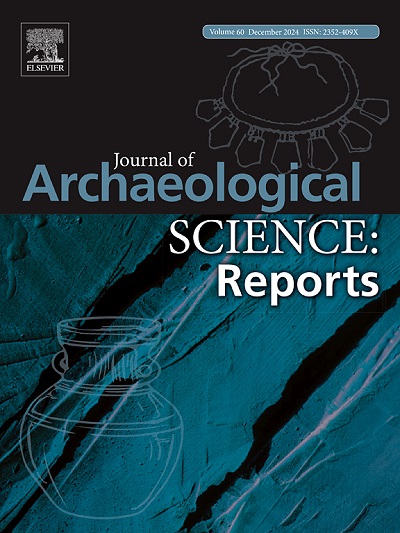A pXRF analysis of utilitarian pottery from the Late Classic Maya polity of Lower Dover, Belize
IF 1.5
2区 历史学
0 ARCHAEOLOGY
引用次数: 0
Abstract
The distribution of utilitarian pottery was a key component of the Classic (∼300–900 CE) Maya domestic economy, yet few studies have used geochemical sourcing of pottery to reconstruct local patterns of household interaction. Portable X-ray fluorescence (pXRF) analysis of pottery offers a promising approach, since it requires little sample preparation and is minimally destructive. While previous pXRF studies have identified limitations in sensitivity and precision, the method enables rapid analysis of large assemblages, which is necessary for characterizing inter- and intra-assemblage geochemical variability. To test this method, we analyzed 1,236 utilitarian pottery sherds from three ceramic types (Belize Red, Cayo Unslipped, and Dolphin Head Red) recovered from eight household contexts in two districts at Lower Dover, a small Late Classic (600–900 CE) Maya polity in the upper Belize River Valley of west-central Belize. Most vessels share similar geochemical compositions, suggesting local production; however, a small number of outliers likely represent imported items. Analyzed specimens fall into six compositional groups, most of which were also evenly distributed among different settlement groups, suggesting relatively uniform consumption across social statuses. This may imply that the inhabitants of hinterland districts acquired some of their pottery from a common, centralized marketplace rather than through localized or household-level production and exchange. As one of the largest ceramic pXRF studies in the Maya region, and one of the few focused on household contexts, this case study demonstrates the potential of pXRF for reconstructing pottery consumption and procurement patterns at the polity, district, and household level.
伯利兹下多佛的古典晚期玛雅政体的实用陶器的pXRF分析
实用陶器的分布是古典(公元300-900年)玛雅家庭经济的关键组成部分,但很少有研究利用陶器的地球化学来源来重建当地的家庭互动模式。便携式x射线荧光(pXRF)分析陶器提供了一个很有前途的方法,因为它需要很少的样品制备和最小的破坏性。虽然之前的pXRF研究已经确定了灵敏度和精度的局限性,但该方法可以快速分析大型组合,这对于表征组合间和组合内的地球化学变异是必要的。为了验证这一方法,我们分析了三种陶瓷类型(伯利兹红、开合红和海豚头红)的1236块实用陶瓷碎片,这些陶瓷碎片来自伯利兹中西部伯利兹河谷上游伯利兹河谷下游多佛两个地区的八个家庭环境,这是一个小型的晚期古典(公元600-900年)玛雅政权。大多数容器具有相似的地球化学成分,表明其产自当地;然而,少数异常值可能代表进口商品。分析的样本可分为6个组成类群,其中大部分分布在不同的聚落群体中,表明不同社会地位的消费相对均匀。这可能意味着内陆地区的居民从一个共同的、集中的市场获得了一些陶器,而不是通过局部或家庭层面的生产和交换。作为玛雅地区最大的陶瓷pXRF研究之一,也是为数不多的专注于家庭背景的案例之一,该案例研究展示了pXRF在重建政治、地区和家庭层面的陶器消费和采购模式方面的潜力。
本文章由计算机程序翻译,如有差异,请以英文原文为准。
求助全文
约1分钟内获得全文
求助全文
来源期刊

Journal of Archaeological Science-Reports
ARCHAEOLOGY-
CiteScore
3.10
自引率
12.50%
发文量
405
期刊介绍:
Journal of Archaeological Science: Reports is aimed at archaeologists and scientists engaged with the application of scientific techniques and methodologies to all areas of archaeology. The journal focuses on the results of the application of scientific methods to archaeological problems and debates. It will provide a forum for reviews and scientific debate of issues in scientific archaeology and their impact in the wider subject. Journal of Archaeological Science: Reports will publish papers of excellent archaeological science, with regional or wider interest. This will include case studies, reviews and short papers where an established scientific technique sheds light on archaeological questions and debates.
 求助内容:
求助内容: 应助结果提醒方式:
应助结果提醒方式:


